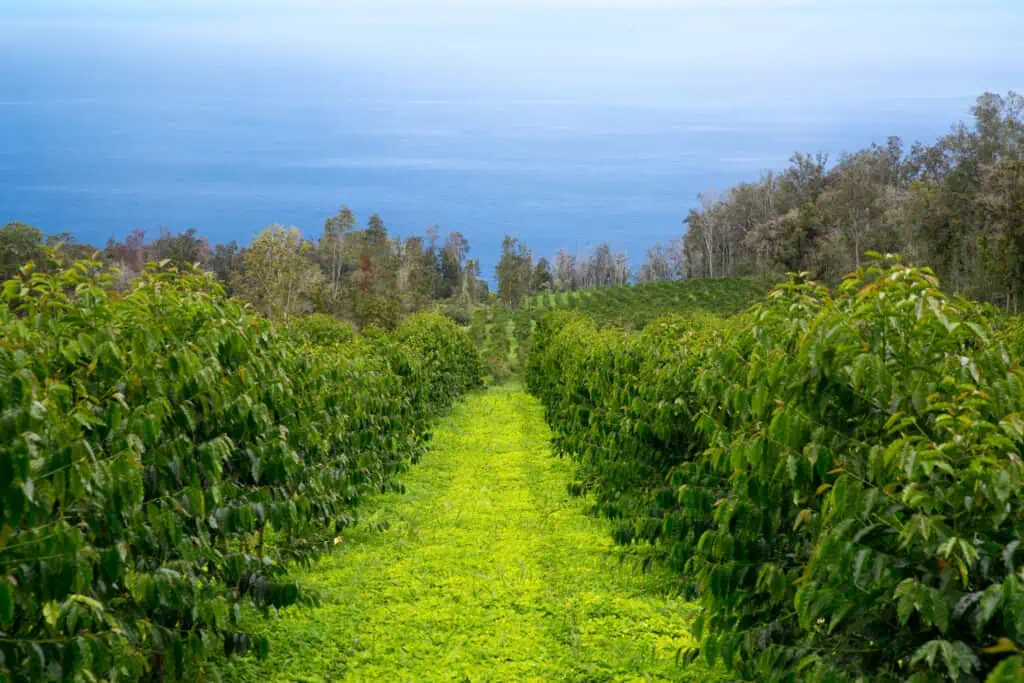
A view of the Pacific Ocean from Hala Tree’s coffee farm in Captain Cook, Hawai’i. Courtesy of Hala Tree.
When most of us think of Hawaiʻi, we think of perfect beaches, iconic sunsets and unparalleled relaxation. When coffee lovers think of Hawaiʻi, “Kona” is often the first word that comes to mind. But while the Hawaiian Islands are, indeed, a paradise, they’re also a place where coffee is a critical part of the economy — an economy that’s been hammered over the past few years by the Covid-19 pandemic and by devastating wildfires, not to mention agricultural pests and diseases specific to the coffee industry.
This month, we not only take a look at the islands’ coffees — roasted by locals — we also scope out what residents, most of whom can’t afford to buy Hawaiʻi-grown coffee for daily drinking — like to have in their morning cup.
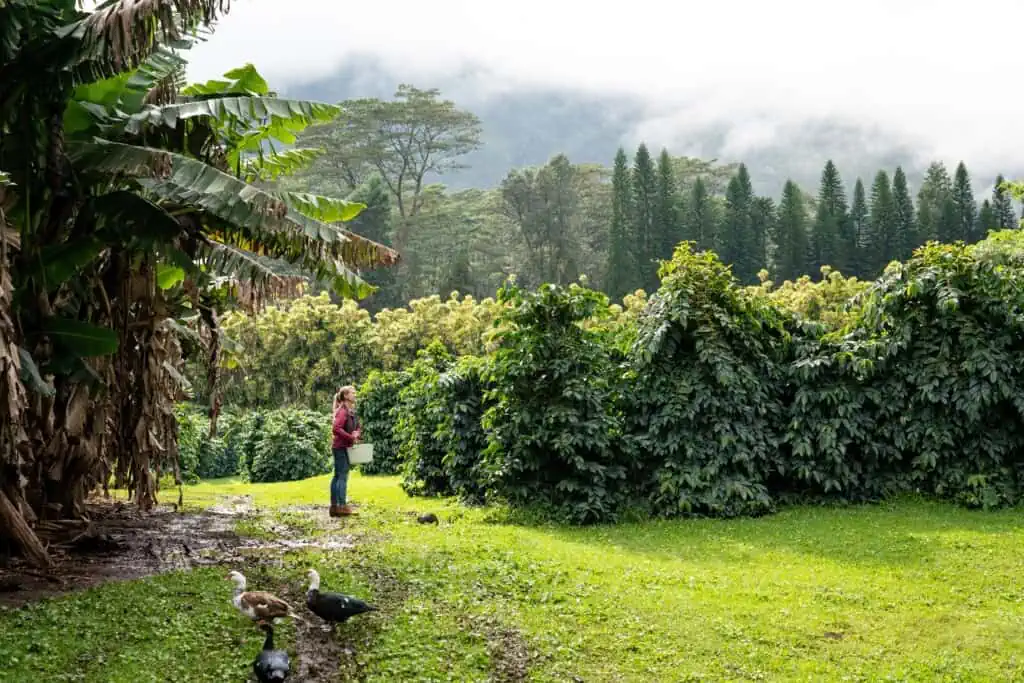
Brandon von Damitz of Big Island Coffee Roasters surveying coffee trees at Silver Cloud Farm. Courtesy of Braden Tavelli.
There are three main kinds of Hawaiian coffee roasters: coffee farmers who roast their own green coffees, roasters that sell only Hawaiian-grown coffees (mostly to an international market), and roasters that sell both Hawaiian coffees and coffees from other origins.
The Current Context of Coffee in Hawaiʻi
While Hawaiʻi contributes only 0.04 percent of the world’s coffee production, coffee is the second most profitable crop grown in the state, a close second to macadamia nuts (College of Tropical Agriculture and Human Resources, University of Hawai’i at Manoa). Most of the coffee grown in the state is exported. During the 2022–23 harvest season, Hawaiʻi farmers produced 24.8 million pounds of coffee, down 9 percent from the previous year (USDA). One of the chief reasons production is down is the emergence of coffee leaf rust (CLR), a fungal disease that has devastated entire coffee industries elsewhere in the world. It first appeared on Maui in 2020, then several weeks later on Hawaiʻi Island, known as the Big Island, which produces the vast majority of the state’s coffee crop. (For reference, the Big Island has more than 1,400 coffee farms, while Maui has just over 300, Kauaʻi has three, and O’ahu and Molokai each have one.)
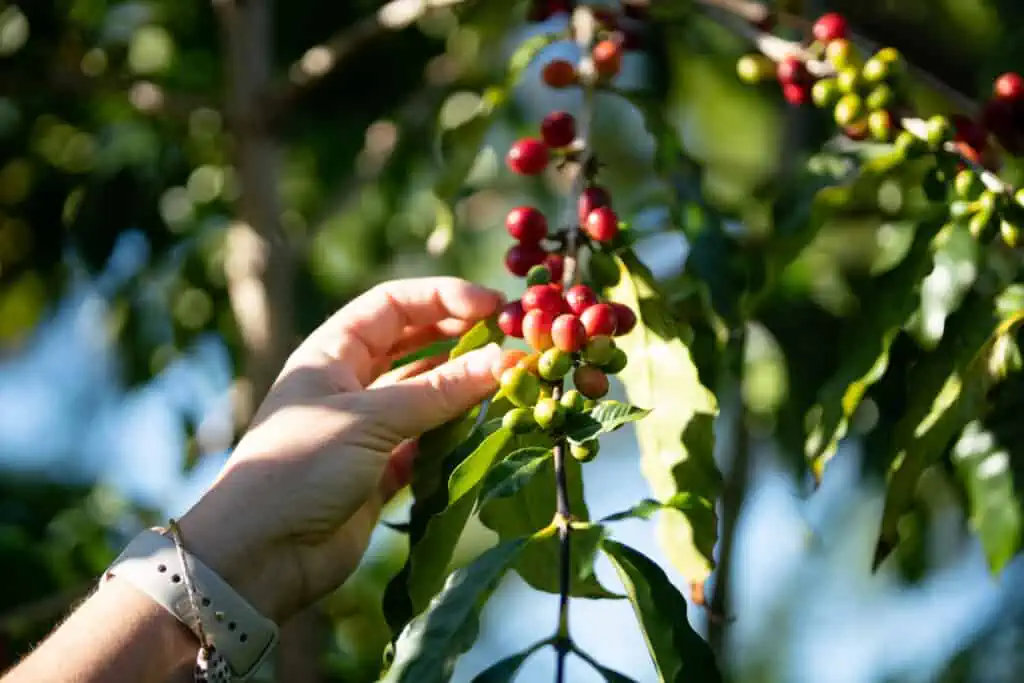
Coffee cherries ripening on Monarch Coffee Farm in Kona, Hawai’i. Courtesy of Monarch Farm.
Before CLR, coffee berry borer (CBB) was the biggest threat to the state’s coffee crop. CBB was found in Kona in 2010, O’ahu in 2014, Maui in 2016, and Kauaʻi and Lānaʻi in 2020 (College of Tropical Agriculture and Human Resources, University of Hawai’i at Manoa) . This beetle, endemic to Central Africa, was responsible for decimating almost all of Maui’s small crop that year. Management techniques are now in place to somewhat curb its potential for destruction, but it remains a force.
Lastly, there were several wildfires in 2023, and the unprecedented scale of the fire that destroyed the town of Lahaina, Maui, has affected the state’s economy overall, both in terms of its largest industry, tourism, and in terms of the loss of dozens of coffee-related businesses. Maui Grown Coffee, the island’s largest producer, has not yet resumed operations, and many coffee shops were destroyed or displaced.
One of Hawaiʻi’s strengths as a producing region is that its coffee prices are not, as they are in most origins, tied to the commodity coffee market. In the 1980s, Kona’s rising star and the marketing brilliance behind it allowed the region to sell its coffees for much higher prices than any other origin. Today, the average price of unroasted Kona coffee is $26.50 per pound, while the average price for Arabica coffee is $2.03 per pound. So, why aren’t Hawaiian coffee farmers paving their driveways with gold? Two simple answers: Yield is down, and costs are higher than anywhere else in the world where coffee is grown.
We review many Hawaiʻi-grown coffees each year, but this report looks at the state’s current coffee scene from a broader perspective, as we invited roasters based anywhere in Hawaiʻi to send us samples from any origin. We received 45 samples: 31 roasted on Hawaiʻi Island, seven on O’ahu, three from Maui, and four from Kauaʻi.
We review here the 14 top-scoring coffees, 11 Hawaiʻi-grown and three grown elsewhere.
Hawaiian Farmers Roasting Their Own Green Coffees
There’s a long local history of coffee farmers roasting up small batches of their coffees to sell at farmers markets and farm stands, but these are, by and large, not the best representation of these coffees. Farmers are not typically trained roasters. There are some notable exceptions to this rule, and we cupped six coffees from roasters who are also farmers, and who paid precise attention to both sides of the operation.
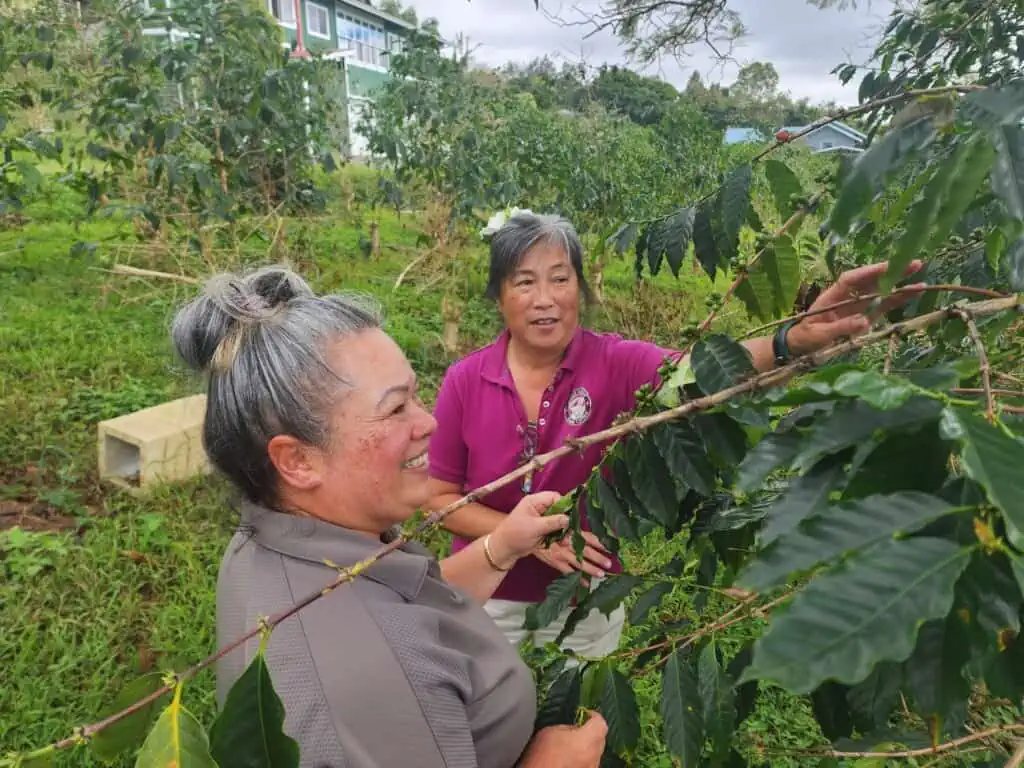
Laura Ross (left), roaster, and Karen Paterson, co-owner of Hula Daddy Kona Coffee. Courtesy of Hula Daddy.
The highest-scoring coffee in this report was Hula Daddy’s wildly impressive Laura’s Reserve SL34 (97), produced at the company’s farm in Holualoa (North Kona) and roasted by Laura Ross, who’s been with Hula Daddy for more than a decade. Co-owner Karen Paterson, who founded Hula Daddy with her husband, Lee, in 2002, says, “The major challenge of growing coffee in Hawaiʻi is labor costs. With benefits, our average hourly pay is over $25. A Central American grower pays workers less than $2 an hour performing the same work, and labor rates in African countries are around $20 a month.” Hula Daddy sells only retail-roasted coffee (as opposed to green coffee or wholesale), both onsite and online, all exclusively from the Patersons’ own 10-acre farm. Its primary customers are buying coffee for home use, and only 10 percent live in Hawaiʻi. The SL34 is an aromatically intoxicating Kona version of a variety of Arabica traditionally grown in Kenya and is exuberantly complex.

Kraig Lee of Kona Farm Direct raking coffees drying on a concrete patio. Courtesy of Kona Farm Direct.
Kraig and Leslie Lee of Kona Farm Direct have been growing traditional Kona coffee for more than 25 years. In the past eight years, they’ve begun experimenting with new varieties, including Geisha. Kraig Lee says, “No doubt, the unique Kona soil and environment can produce some of the best quality coffees in the world, but there are dozens of ways you can screw it up. If you don’t pay attention to the details, you can turn great coffee into average or worse. I am so fortunate that I have employees who pride themselves in taking care of the land, picking only ripe cherries, and properly processing and drying the beans.” Kona Farm Direct’s 100% Kona Classic (94) is a lively, balanced Typica, sweet-toned, chocolaty and rich.

Lorie Obra, co-founder of Rusty’s Hawaiian in Pahala Hawai’i. Courtesy of Rusty’s.
Rusty’s Hawaiian is another longtime family farm, based in the Ka‘ū growing region on the east side of Hawaiʻi Island south of Hilo. Founded by Rusty and Lorie Obra in the late 1990s, Rusty’s was on the cusp of making a name for Ka‘ū coffee, a region in the shadow of Kona. When Rusty died of cancer in 2006, Lorie committed to actualizing their dream, and Rusty’s, now a world-class roaster as well, put Ka‘ū on the map. Rusty’s Classic Ka‘ū Peaberry (94) is lush, decadently sweet, deep-toned and sensuous. Lorie’s daughter, Joan, and son-in-law, Ralph Gaston, moved from the mainland to Pahala (where Rusty’s is located) full-time in 2011, and the couple run the operation with Lorie, who’s still going strong in her seventies. Gaston says that there are many challenges involved in farming coffee in Hawaiʻi: “The increased cost of production, primarily due to the spread of coffee leaf rust, has been difficult to deal with. This means more for treatment of CLR, managing that with the treatment for coffee borer, increased costs for fertilizer, not to mention rising labor costs. It’s a lot of pressure on the cost of production.” A full 40 percent of Rusty’s online customers are based in Hawaiʻi, and the remaining 60 percent are from the West Coast (California, Oregon, Washington) and Alaska, with a small percentage in Canada, Japan, Germany and Korea.
Kona’s Heavenly Hawaiian is one of several Hawaiian farmer-roasters working with non-traditional varieties of Arabica. The Kona Geisha Champagne (94) submitted for this report has elegant notes of nectarine, star jasmine and cocoa nib, a profile very similar to the traditional Geishas of Panama.
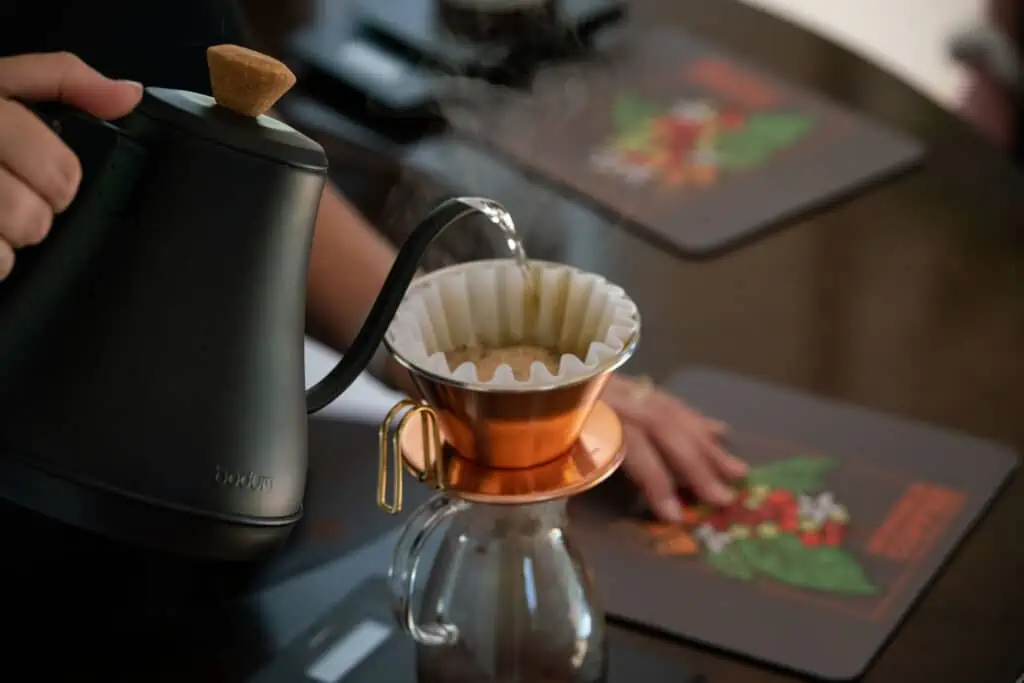
Brewing a pour-over at Monarch Coffee Farm in Kona, Hawai’i. Courtesy of Monarch Coffee.
Monarch Coffee’s “Hapa” (meaning “half”) (93) is a post-roast mélange of light-, medium- and dark-roasted Kona Typica, a comfortingly familiar Kona profile that’s crisply chocolaty and sweetly nutty. Abby Munoz, director of operations and daughter of co-founders Greg and Susy Stille, describes Monarch’s relationship with its customers as collaborative: “The values our customers hold dear — quality, sustainability, ethical sourcing, community involvement and enriching experiences — guide their purchasing decisions and loyalty to our brand. … This connection goes beyond a transactional relationship; it’s a shared journey towards a more sustainable and community-focused way of living.” She also speaks to the challenges of selling Kona coffees exclusively, saying, “Compared to other major coffee-producing countries, Kona’s output is minuscule, and restricted growing regions with strict geographical regulations that limit production area means limited supply, which leads to higher production costs. Logistics and sustainability are also big challenges for us. Due to the island’s remote location, shipping costs are a major hurdle.” Munoz also mentions CLR, volcanic eruptions, the effects of climate change, high labor costs and labor shortages as additional challenges for small farms in Hawaii.

Jean Orlowski of Hala Tree Coffee conducting a farm tour. Courtesy of Hala Tree.
Hala Tree’s SL28 Honey (93) is another variety associated with Kenya that, produced in the context of Kona terroir, is floral, citrusy, cohesive and confident. Hala Tree co-owner Danielle Orlowski says, “Having high production costs pushes us to make sure we produce one of the best coffees in the world. This is accomplished by paying attention to details, from farming to processing. Being in control of the process from tree to cup is what ensures our quality.”
Kona-born Mark Takizawa has a five-acre farm, Kona Hills Coffee (not to be confused with the large-scale 1,900-acre farm by the same name), where he’s done everything himself since 1987. His 100% Kona Extra Fancy (92) is a classic profile with notes of baking chocolate, date and hazelnut.
Hawaiian Roasters That Sell Only Hawaiian Coffees
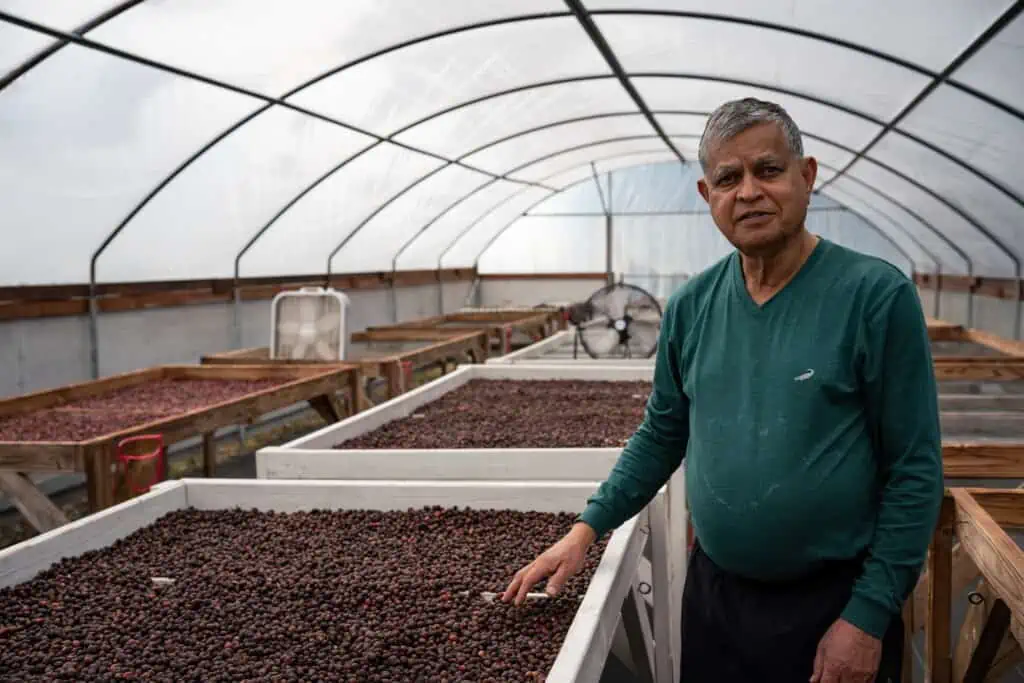
Miles Mayne, of Silver Cloud farm, checking on coffee drying on raised beds. Courtesy of Braden Tavelli.
Big Island Coffee Roasters sent in a collaborative coffee in partnership with farmer Miles Mayne. This Ka‘ū Giant Maragogipe (95) is the result of co-founder Brandon von Damitz and Mayne’s many yeast experiments over three harvest seasons. The version they landed on uses K1-v1116 yeast from Lalvin, with anaerobic fermentation for 72 hours. This uniquely composed, big-beaned Maragogipe cup is driven by notes of stone fruit, hop-like florals, resiny amber and distinct tangerine. Co-founder Kelleigh Stewart acknowledges the challenges of working exclusively with Hawaiʻi-grown coffees, but also speaks to the opportunities it affords: “When people ask, ‘Why is Hawaiʻi coffee so expensive?’ this initiates a dialogue for deeper engagement and understanding of the supply chain. There’s so much more supply chain transparency and ethics with Hawaiʻi coffees. And the chain is much shorter because there’s little room for middle people. And a much greater percentage of the purchase price goes directly to the farmer. … So, while dealing with an ‘expensive’ product poses challenges, it’s easy for us to be proud of our farmer relationships, knowing we’re fostering an ethical, transparent supply chain. I often turn the question around and ask people, ‘Why is the rest of the world’s coffee so cheap and undervalued?’”
Pacific Coffee Research (PCR) has an interesting backstory. A women-owned business founded as Hawaiʻi’s first education and coffee training center, PCR offers analysis of green and roasted coffees, Q-grader courses, barista training, equipment procurement and maintenance, and much more. And now, PCR has its own line of retail-roasted coffees developed in partnership with local farmers with an emphasis on women producers. The 100% Ka‘ū Navarro (93) submitted for this report, a blend of Pacamara and Catuaí, is from Delvin and Nette Navarro’s Ka‘ū farm. Centered around fruit and floral notes, this blend is complicated by a compelling sweet herbaceousness. Co-owner Madeleine Longoria Garcia also notes the limited supply of Hawaiian-grown coffee, the impacts of CLR and the 2023 wildfires as significant challenges of working exclusively with Hawaiʻi-grown coffees.
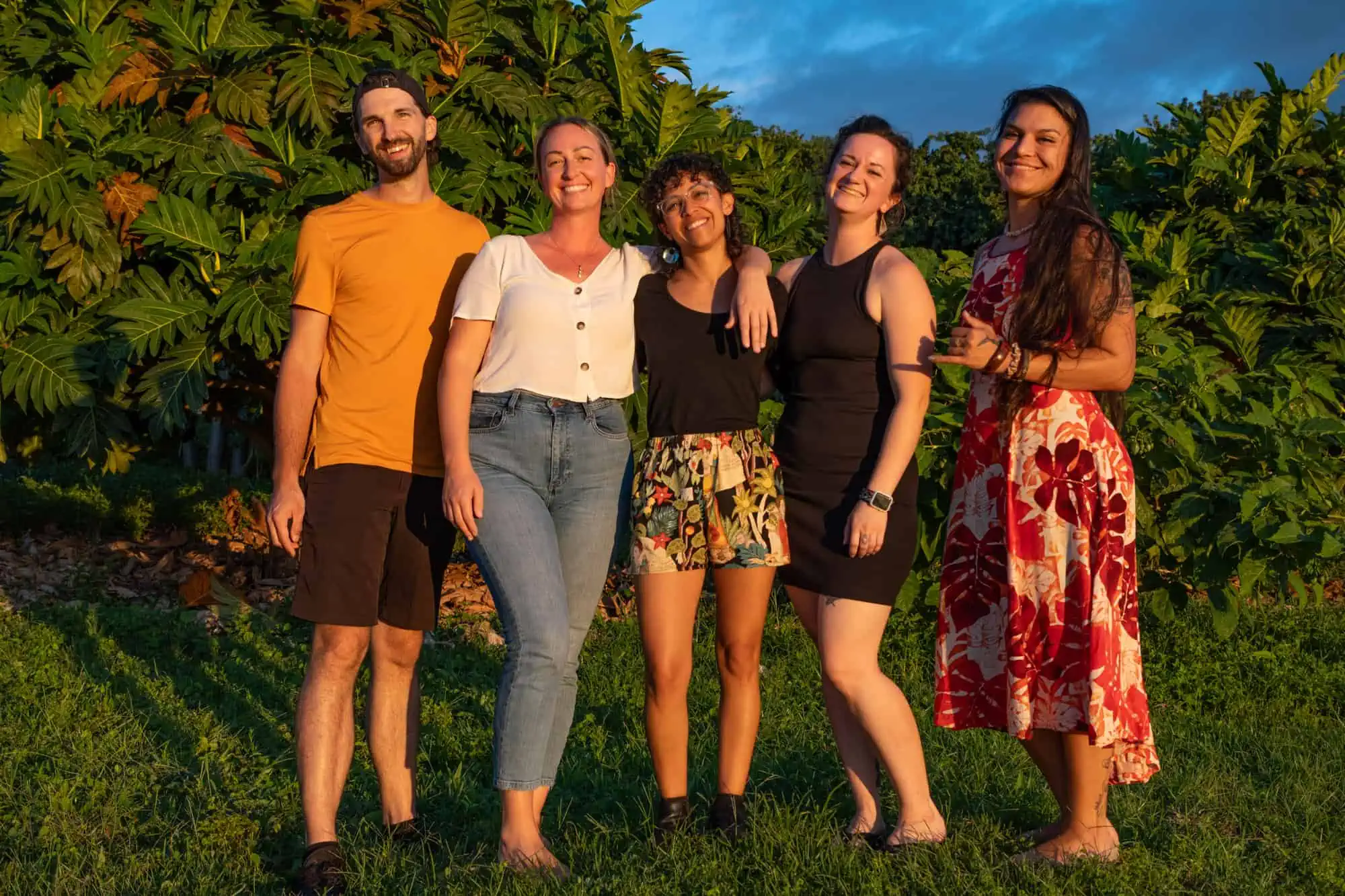
The Pacific Coffee Research team. Courtesy of PCR.
But in addition, she argues, “The price model used in Hawaiʻi should be replicated globally. In order to have financially sustainable businesses, growers need to be able to sell their products based on their real costs and required profit margins versus having their products’ worth being dictated based on where the C-market happens to land on any given day. Our global industry talks about this all the time, as we don’t have a financially sustainable industry, and no one is really doing very much to change that. The current model gives buyers too much power when it comes to price and strips growers of negotiation power because everyone is looking at the C-market.”
Hawaiian Roasters That Sell Both Local and Global Coffees
Little-known fact: It’s illegal for roasters in Hawaiʻi to import green coffees from Africa. This outdated law hearkens back to concerns about agricultural contamination, but it’s still on the books, and it’s why you’ll see coffees from Central and South America and Indonesia at local island coffee shops — but not African coffees.
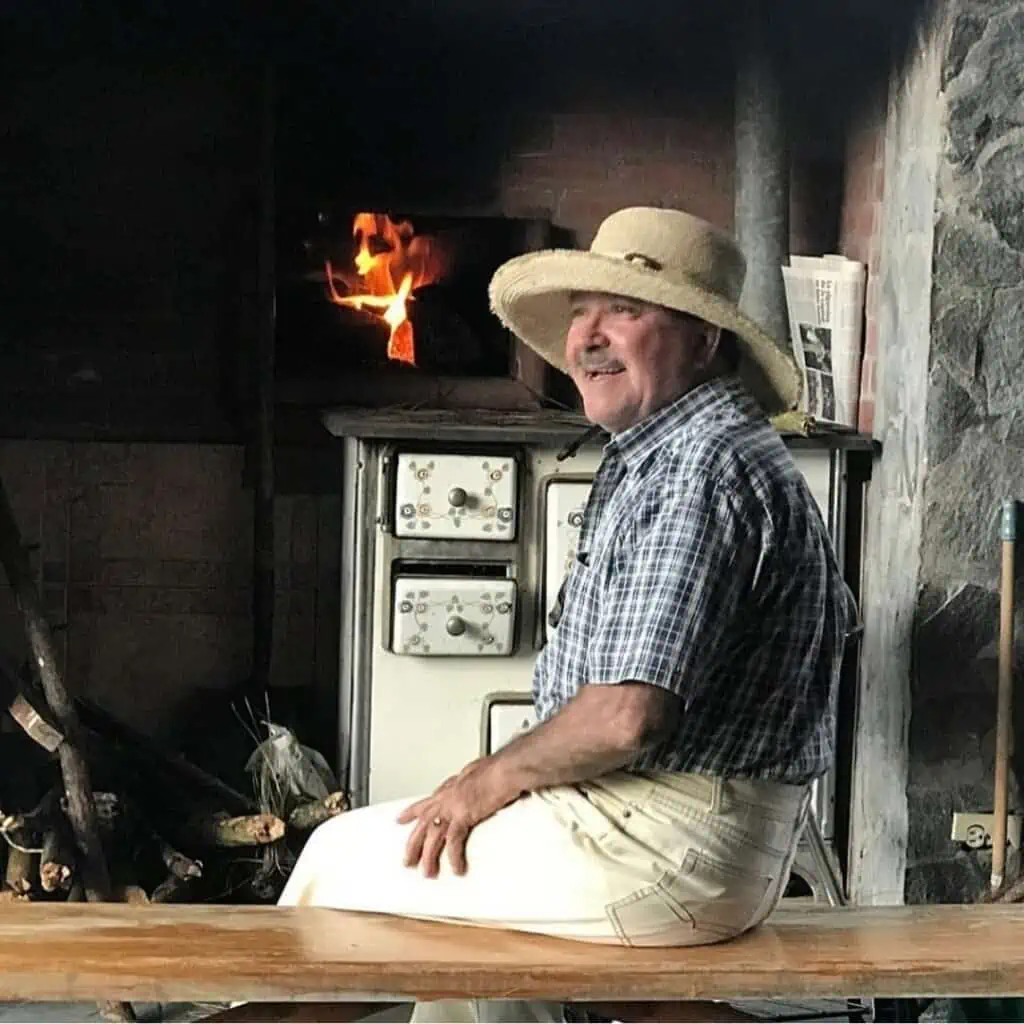
Teodoro Garrido, founder of Mama Cata Farm in Boquete, Panama. Courtesy of Klatch Coffee.
Well-known to the virtual pages of Coffee Review, Hilo-based Paradise Roasters used to have a roasting facility in Minnesota. Now that the company is fully Hawaiʻi-based, owner Miguel Meza specializes in rare microlots from the Philippines, Thailand, Vietnam, Panama and, of course, Hawaiʻi. For this report, we review the richly floral, fruit-saturated Panama Mokkita Natural Mama Cata Estate (96) with notes of wild strawberry, lavender and black sage. Meza says, “We did not start out as a roaster of Hawaiʻi-grown coffees, but rather as a specialty coffee roaster. Due to the extremely high cost of producing coffee in Hawaiʻi, 10 times that of most other countries, the market for Hawaiʻi-grown coffees is limited as a daily-drinking coffee for most consumers. Moreover, we like variety and want to offer the widest array of sensory experiences possible with coffee, some of which cannot (yet) be found within coffee just from Hawaiʻi.” He adds that, “Like every other producing origin, the majority of the coffees produced in Hawaiʻi are commercial quality, not specialty. As a very small producing region, the quantities of high-quality coffee from Hawaiʻi are quite limited. Many of our Hawaiʻi coffees we produce from the cherry stage to ensure quality and apply proprietary processing techniques on them to create a diversity of cup profiles.”
Maui-based Origin Coffee Roasters submitted a JN Farms Double Anaerobic Red Bourbon (94) produced in Ka‘ū, an aromatically wide-ranging cup with notes of spice-toned florals and sweetly tart fruits. Owner Heather Brisson-Lutz loves Hawaiʻi-grown coffees but finds that she needs to also provide coffees from other origins for her local customer base: “It is challenging to market coffees not grown in Hawaiʻi in our local markets, but we have found that many of the local residents enjoy these coffees because they offer different flavors, and their price points are friendlier for daily coffee drinkers. We want to keep our coffees accessible not only in price point but also in terms of flavor profiles, processing methods and varieties.”
Kailua, O’ahu-based ChadLou’s Coffee Roasters sells both Hawaiʻi-grown and international coffees. The Cruz Loma Anaerobic Washed Ecuador (93) we review here is equal parts sweet, tart and savory (think dark chocolate, macerated kiwi and tarragon). Its popular coffee shop caters to both visitors and locals, offering a large menu of specialty coffee options as well as artfully designed bags to take home.
Hanalei Coffee Roasters is a micro-roaster on Kauaʻi’s North Shore in the stunningly beautiful town of Hanalei. Its Sunrise Blend (92) of coffees from Maui and Honduras is a friendly, easygoing and affordable coffee with notes of golden raisin, cashew, orange zest and cane sugar. The roaster has a selection of 100 percent Hawaiian coffees in addition to its coffees from Central and South America.
Maui Oma Coffee Roasting Co.’s 100% Hawaii Three Island Blend (92) is a combination of coffees grown on Hawaiʻi Island, Maui and O’ahu. Cocoa-toned and richly nutty, it’s a good introduction to the coffees of the Hawaiian Islands for newcomers to the genre. Maui Oma is located in Kahului, Maui, and primarily works with Hawaiian coffees but also has a selection of coffees from Central and South America and Indonesia.
Supporting the Hawaiʻi Coffee Industry
Whatever your coffee jam might be, Hawaiian roasters offer the world in a cup. In addition to buying coffee directly from the roasters featured in this report, you can support Maui’s wildfire recovery efforts here:













